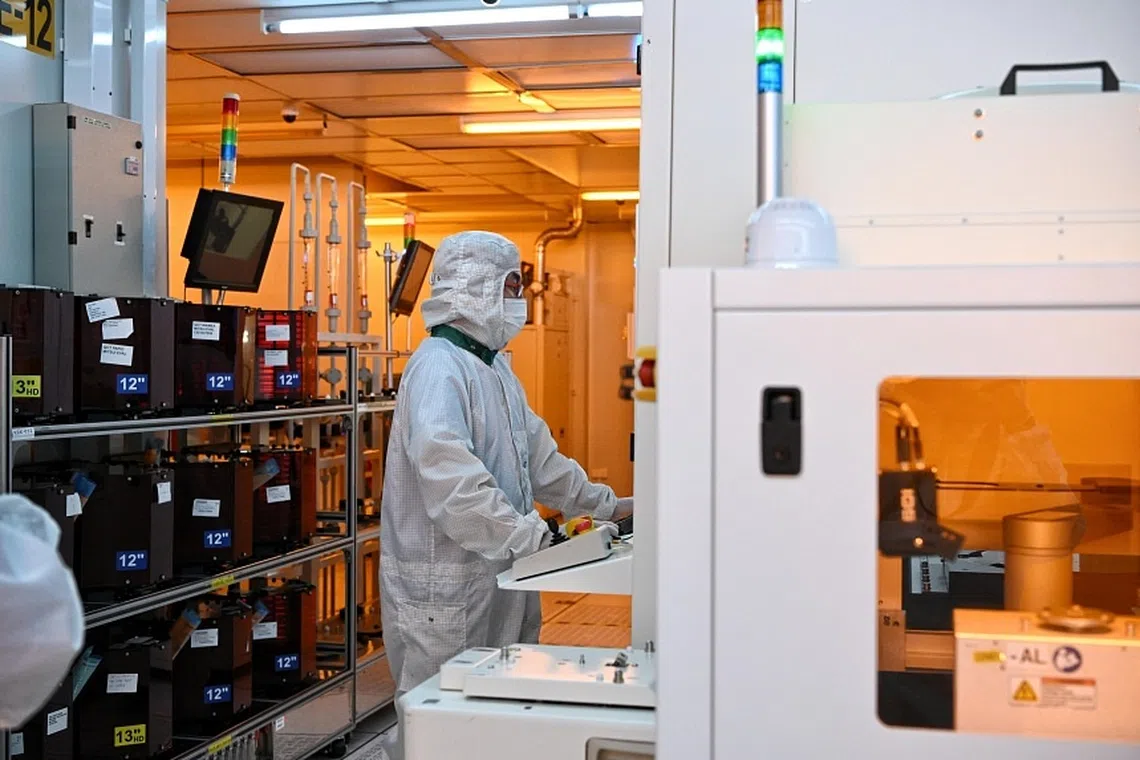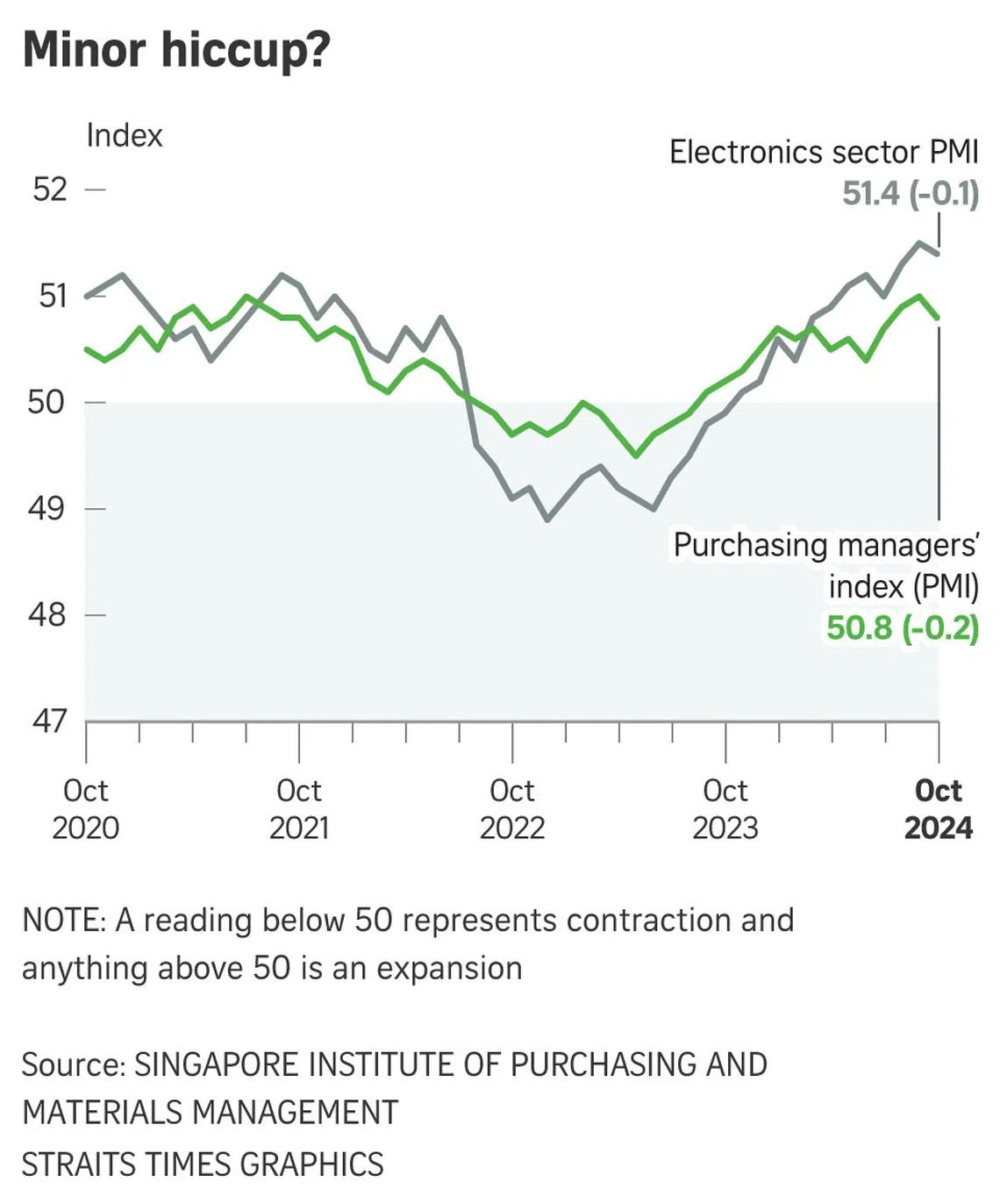Slight slowdown in Singapore’s factory output may just be a blip, say economists
Sign up now: Get ST's newsletters delivered to your inbox

The electronics sector is likely to remain the key driver of overall factory growth.
PHOTO: ST FILE
Follow topic:
SINGAPORE – A marginal dip in manufacturing activity in October points to a slight slowdown in the sector, but this may just be a blip in the data for now, economists say.
October’s purchasing managers’ index (PMI) eased to 50.8 points, down from 51 points in September. A barometer of the manufacturing sector, PMI readings above 50 indicate growth, while those below signal contraction.
Electronics remains a crucial driver of economic growth, despite its PMI also posting a slight drop to 51.4 points, from 51.5 points in September, according to data released by the Singapore Institute of Purchasing and Materials Management on Nov 2.
At the sub-index level, imports, employment and supplier deliveries saw marginal improvements in both the main and electronics PMIs.
In comparison, stocks of finished goods and backlogs of orders advanced for the main PMI but retreated for electronics. All other sub-indices registered small declines for both PMIs.
Economists told The Straits Times that despite the small pullback, the latest set of data does not set off alarm bells yet, as the manufacturing recovery remains intact since its strong turnaround in the second quarter.
DBS Bank economist Chua Han Teng said the data is “in line with the picture of a soft landing for the global economy”. Maybank Research’s senior economist Chua Hak Bin said “it’s probably premature to worry”.
OCBC Bank chief economist Selena Ling said while the numbers suggest that momentum may plateau, with manufacturers becoming more cautious in the months ahead, “we’re still in expansion mode, especially reinforced by the future business indices”.
Elsewhere in the region, the macro picture for manufacturing is just as mixed, with the PMIs for China, India and Vietnam expanding. In contrast, Taiwan and Thailand are likely to decelerate, Indonesia and Malaysia remain stuck in contraction, while Japan continues to shrink further.
Back home, the electronics sector, which accounts for nearly half of the nation’s manufacturing output, is likely to remain the key driver of overall factory growth.
DBS’ Mr Chua said: “Our optimism continues to be supported by the faster expansion of the electronics PMI compared to the headline gauge for an eighth consecutive month.
“At the same time, most electronics sub-indices also tracked at higher-than-comparable headline manufacturing sub-indices.
“External demand for Singapore’s electronics products appears resilient, with the sector’s new export orders still growing despite a slight slowdown,” he noted.
Looking ahead, downside risks and uncertainties persist despite the still-sanguine October data, with DBS’ Mr Chua pointing to potential disruptions to supply chains should ongoing geopolitical conflicts intensify.
Ms Ling said: “There are still potential dark clouds weighing on global demand conditions.”
These include a possibility that the US Federal Reserve may not cut its interest rate on Nov 7. A 0.25 per cent cut is widely anticipated.
Should Trump win the US presidential election on Nov 5, both Ms Ling and Maybank’s Dr Chua concurred that higher US import tariffs would be in store, along with disruptions to not only China but also to global trade. These, in turn, would have a knock-on impact on Asian manufacturing supply chains.
This is likely to have a major bearing on how Singapore’s manufacturing and exports fare in 2025, given how open the domestic economy is, they noted.



